By TREVOR HOGG
By TREVOR HOGG
Images courtesy of Warner Bros. Pictures.
Rather than a world constructed around photorealistic pixels, a video game created by Markus Persson has taken the boxier 3D voxel route, which has become its signature aesthetic, and sparked an international phenomenon that finally gets adapted into a feature with the release of A Minecraft Movie. Brought onboard to help filmmaker Jared Hess in creating the environments that the cast of Jason Momoa, Jack Black, Sebastian Hansen, Emma Myers and Danielle Brooks find themselves inhabiting was Disguise under the direction of Production VFX Supervisor Dan Lemmon.
“[A]s the Senior Unreal Artist within the Virtual Art Department (VAD) on Minecraft, I experienced the full creative workflow. What stood out most was how deeply the VAD was embedded across every stage of production. We weren’t working in isolation. From the production designer and director to the VFX supervisor and DP, the VAD became a hub for collaboration.”
—Talia Finlayson, Creative Technologist, Disguise
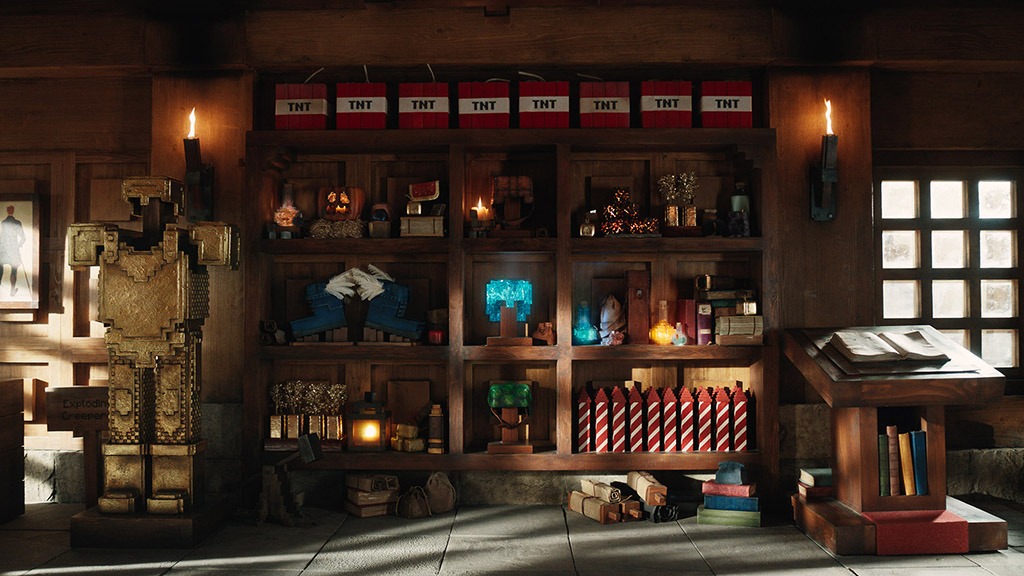
“Prior to working on A Minecraft Movie, I held more technical roles, like serving as the Virtual Production LED Volume Operator on a project for Apple TV+ and Paramount Pictures,” notes Talia Finlayson, Creative Technologist for Disguise. “But as the Senior Unreal Artist within the Virtual Art Department (VAD) on Minecraft, I experienced the full creative workflow. What stood out most was how deeply the VAD was embedded across every stage of production. We weren’t working in isolation. From the production designer and director to the VFX supervisor and DP, the VAD became a hub for collaboration.” The project provided new opportunities. “I’ve always loved the physicality of working with an LED volume, both for the immersion it provides and the way that seeing the environment helps shape an actor’s performance,” notes Laura Bell, Creative Technologist for Disguise. “But for A Minecraft Movie, we used Simulcam instead, and it was an incredible experience to live-composite an entire Minecraft world in real-time, especially with nothing on set but blue curtains.”
Set designs originally created by the art department in Rhinoceros 3D were transformed into fully navigable 3D environments within Unreal Engine. “These scenes were far more than visualizations,” Finlayson remarks. “They were interactive tools used throughout the production pipeline. We would ingest 3D models and concept art, clean and optimize geometry using tools like Blender, Cinema 4D or Maya, then build out the world in Unreal Engine. This included applying materials, lighting and extending environments. These Unreal scenes we created were vital tools across the production and were used for a variety of purposes such as enabling the director to explore shot compositions, block scenes and experiment with camera movement in a virtual space, as well as passing along Unreal Engine scenes to the visual effects vendors so they could align their digital environments and set extensions with the approved production layouts.”
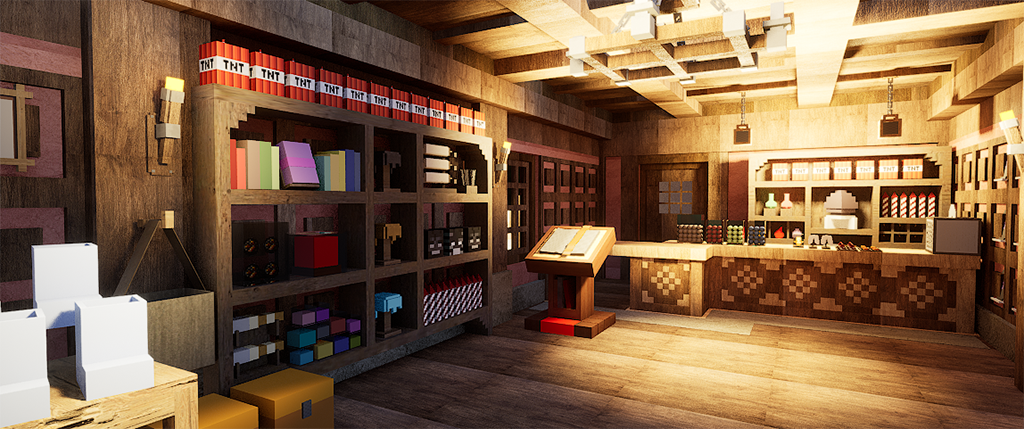
Certain elements have to be kept in mind when constructing virtual environments. “When building virtual environments, you need to consider what can actually be built, how actors and cameras will move through the space, and what’s safe and practical on set,” Bell observes. “Outside the areas where strict accuracy is required, you want the environments to blend naturally with the original designs from the art department and support the story, creating a space that feels right for the scene, guides the audience’s eye and sets the right tone. Things like composition, lighting and small environmental details can be really fun to work on, but also serve as beautiful additions to help enrich a story.”
“I’ve always loved the physicality of working with an LED volume, both for the immersion it provides and the way that seeing the environment helps shape an actor’s performance. But for A Minecraft Movie, we used Simulcam instead, and it was an incredible experience to live-composite an entire Minecraft world in real-time, especially with nothing on set but blue curtains.”
—Laura Bell, Creative Technologist, Disguise
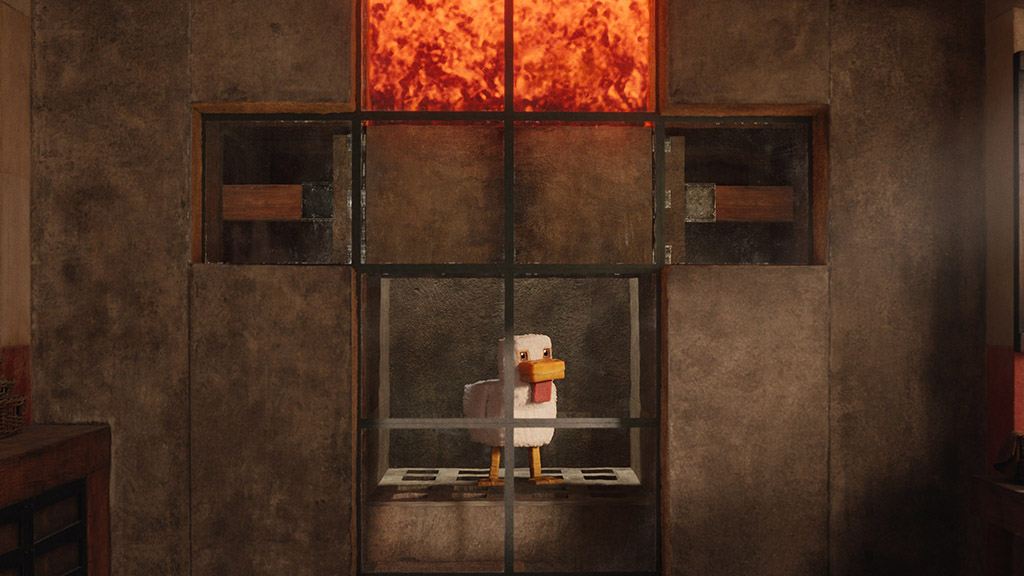
Concept art was provided that served as visual touchstones. “We received concept art provided by the amazing team of concept artists,” Finlayson states. “Not only did they send us 2D artwork, but they often shared the 3D models they used to create those visuals. These models were incredibly helpful as starting points when building out the virtual environments in Unreal Engine; they gave us a clear sense of composition and design intent. Storyboards were also a key part of the process and were constantly being updated as the project evolved. Having access to the latest versions allowed us to tailor the virtual environments to match camera angles, story beats and staging. Sometimes we would also help the storyboard artists by sending through images of the Unreal Engine worlds to help them geographically position themselves in the worlds and aid in their storyboarding.” At times, the video game assets came in handy. “Exteriors often involved large-scale landscapes and stylized architectural elements, which had to feel true to the Minecraft world,” Finlayson explains. “In some cases, we brought in geometry from the game itself to help quickly block out areas. For example, we did this for the Elytra Flight Chase sequence, which takes place through a large canyon.”
Flexibility was critical. “A key technical challenge we faced was ensuring that the Unreal levels were built in a way that allowed for fast and flexible iteration,” Finlayson remarks. “Since our environments were constantly being reviewed by the director, production designer, DP and VFX supervisor, we needed to be able to respond quickly to feedback, sometimes live during a review session. To support this, we had to keep our scenes modular and well-organized; that meant breaking environments down into manageable components and maintaining clean naming conventions. By setting up the levels this way, we could make layout changes, swap assets or adjust lighting on the fly without breaking the scene or slowing down the process.” Production schedules influence the workflows, pipelines and techniques. “No two projects will ever feel exactly the same,” Bell notes. “For example, Pat Younis [VAD Art Director] adapted his typical VR setup to allow scene reviews using a PS5 controller, which made it much more comfortable and accessible for the director. On a more technical side, because everything was cubes and voxels, my Blender workflow ended up being way heavier on the re-mesh modifier than usual, definitely not something I’ll run into again anytime soon!”
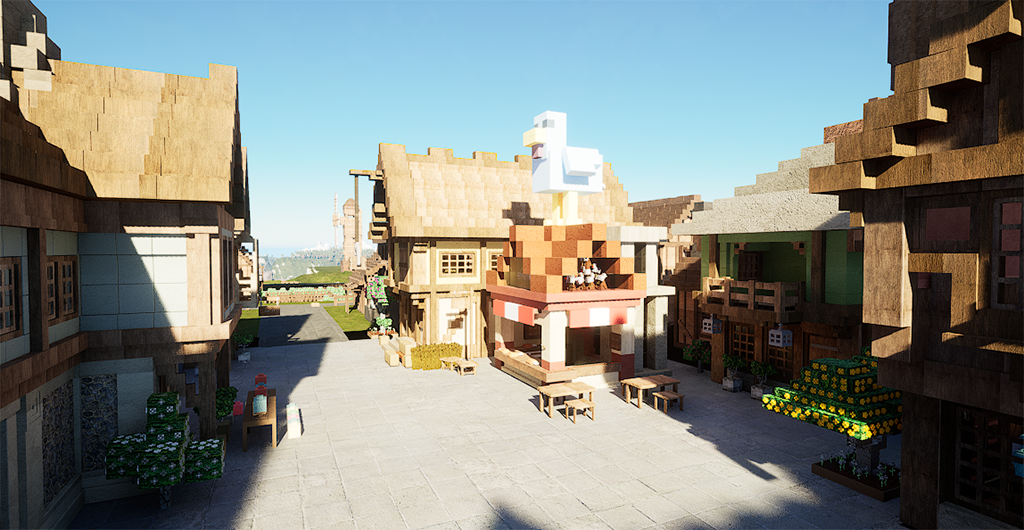
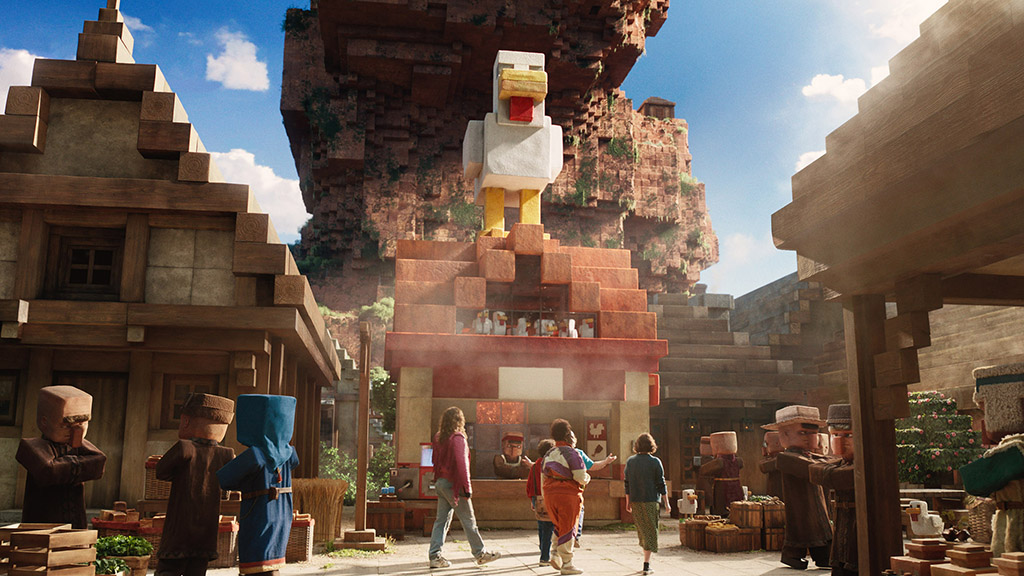
“We received concept art provided by the amazing team of concept artists. Not only did they send us 2D artwork, but they often shared the 3D models they used to create those visuals. These models were incredibly helpful as starting points when building out the virtual environments in Unreal Engine; they gave us a clear sense of composition and design intent. Storyboards were also a key part of the process and were constantly being updated as the project evolved. Having access to the latest versions allowed us to tailor the virtual environments to match camera angles, story beats and staging.”
—Talia Finlayson, Creative Technologist, Disguise
The design and composition of virtual environments tended to remain consistent throughout principal photography. “The only major design change I can recall was the removal of a second story from a building in Midport Village to allow the camera crane to get a clear shot of the chicken perched above Steve’s lava chicken shack,” Finlayson remarks. “I would agree that Midport Village likely went through the most iterations,” Bell responds. “The archway, in particular, became a visual anchor across different levels. We often placed it off in the distance to help orient both ourselves and the audience and show how far the characters had traveled. I remember rebuilding the stairs leading up to the rampart five or six times, using different configurations based on the physically constructed stairs. This was because there were storyboarded sequences of the film’s characters, Henry, Steve and Garrett, being chased by piglins, and the action needed to match what could be achieved practically on set.”
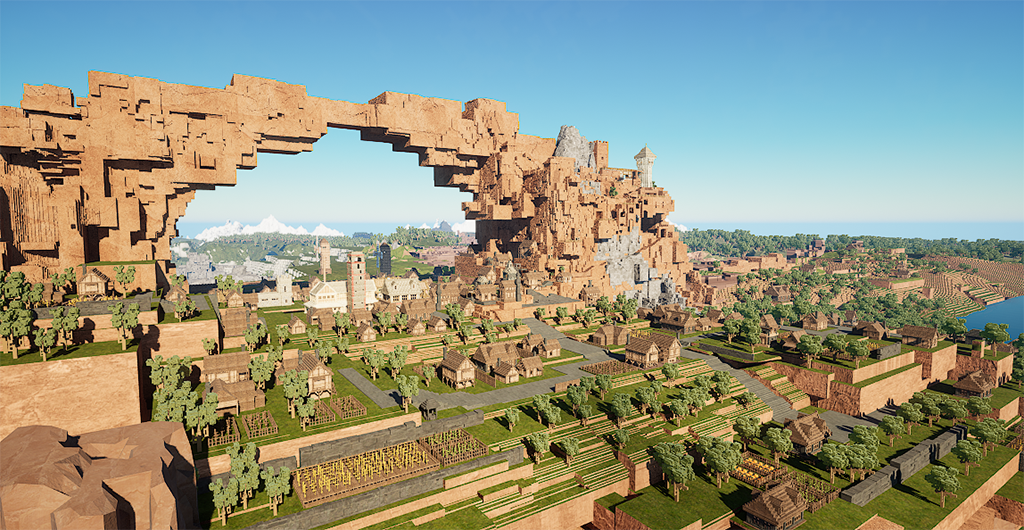
Complex virtual environments were constructed for the final battle and the various forest scenes throughout the movie. “What made these particularly challenging was the way physical set pieces were repurposed and repositioned to serve multiple scenes and locations within the story,” Finlayson reveals. “The same built elements had to appear in different parts of the world, so we had to carefully adjust the virtual environments to accommodate those different positions.” Bell is in agreement with her colleague. “The forest scenes were some of the more complex environments to manage. It could get tricky, particularly when the filming schedule shifted. There was one day on set where the order of shots changed unexpectedly, and because the physical sets looked so similar, I initially loaded a different perspective than planned. Fortunately, thanks to our workflow, Lindsay George [VP Tech] and I were able to quickly open the recorded sequence in Unreal Engine and swap out the correct virtual environment for the live composite without any disruption to the shoot.”
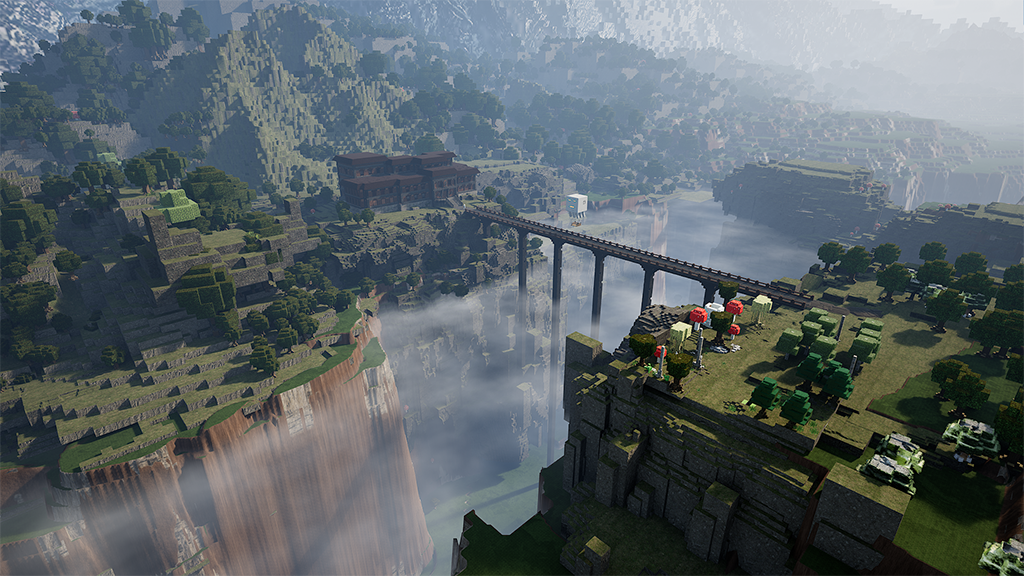
“Midport Village likely went through the most iterations. The archway, in particular, became a visual anchor across different levels. We often placed it off in the distance to help orient both ourselves and the audience and show how far the characters had traveled.”
—Laura Bell, Creative Technologist, Disguise
Extensive detail was given to the center of the sets where the main action unfolds. “For these areas, we received prop layouts from the prop department to ensure accurate placement and alignment with the physical builds,” Finlayson explains. “These central environments were used heavily for storyboarding, blocking and department reviews, so precision was essential. As we moved further out from the practical set, the environments became more about blocking and spatial context rather than fine detail. We worked closely with Production Designer Grant Major to get approval on these extended environments, making sure they aligned with the overall visual direction. We also used creatures and crowd stand-ins provided by the visual effects team. These gave a great sense of scale and placement during early planning stages and allowed other departments to better understand how these elements would be integrated into the scenes.”
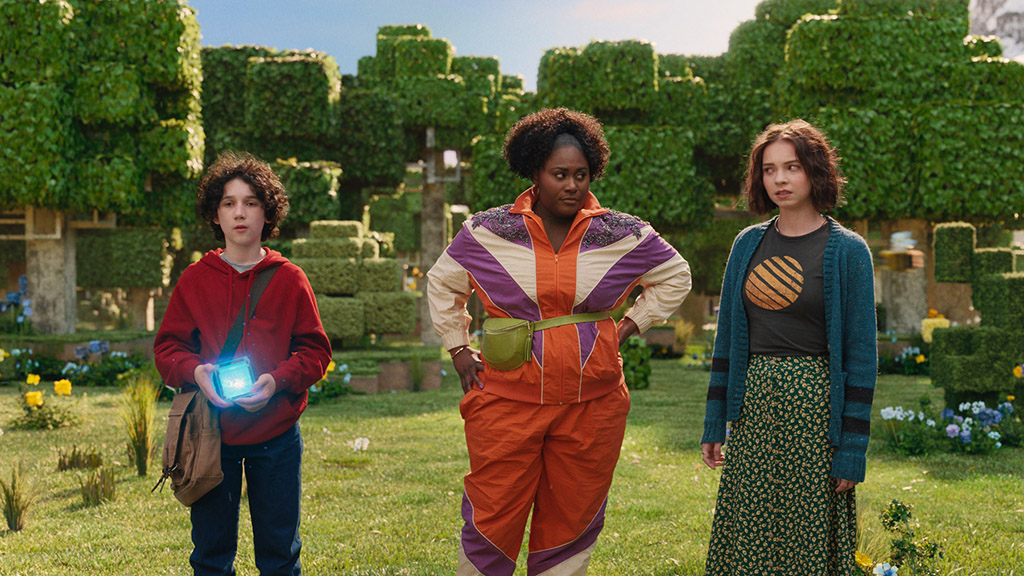
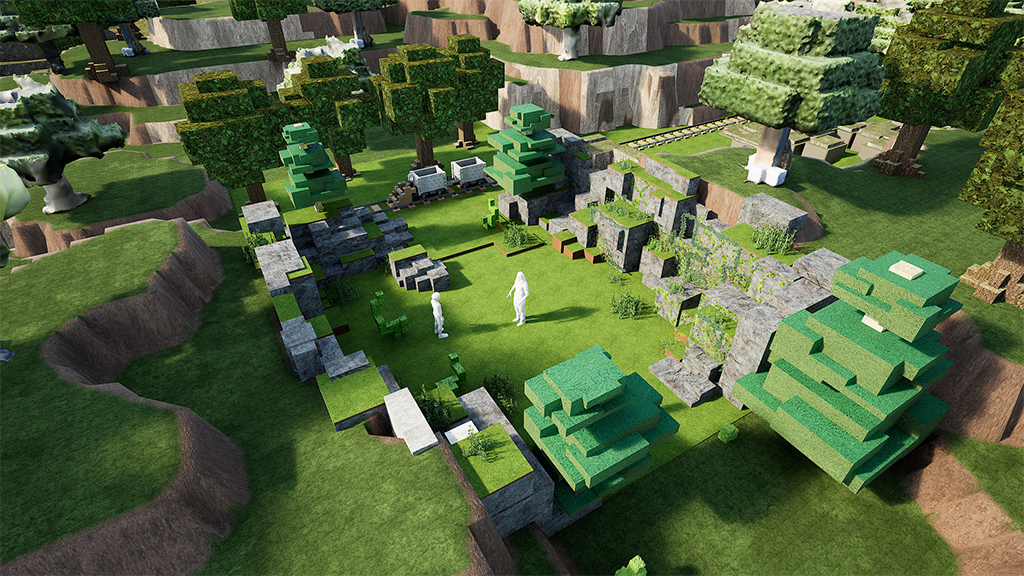
Practical requirements like camera moves, stunt choreography and crane setups had an impact on the creation of virtual environments. “Sometimes we would adjust layouts slightly to open up areas for tracking shots or rework spaces to accommodate key action beats, all while keeping the environment feeling cohesive and true to the Minecraft world,” Bell states. “Simulcam bridged the physical and virtual worlds on set, overlaying Unreal Engine environments onto live-action scenes in real-time, giving the director, DP and other department heads a fully-realized preview of shots and enabling precise, informed decisions during production. It also recorded critical production data like camera movement paths, which was handed over to the post-production team to give them the exact tracks they needed, streamlining the visual effects pipeline.”

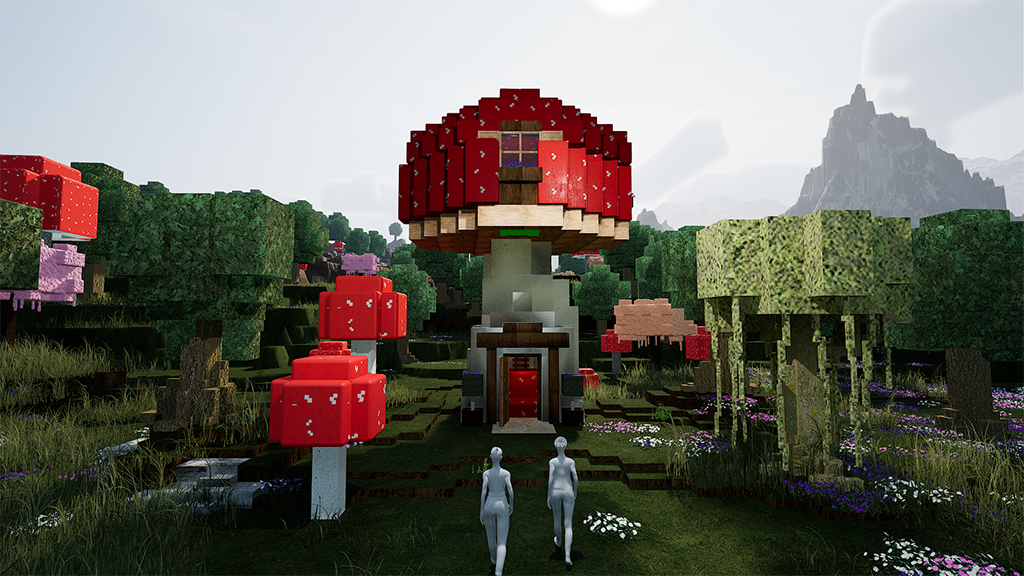
“One of the biggest challenges for me was managing constant iteration while keeping our environments clean, organized and easy to update,” Finlayson notes. “Because the virtual sets were reviewed regularly by the director and other heads of departments, feedback was often implemented live in the room. This meant the environments had to be flexible. But overall, this was an amazing project to work on, and I am so grateful for the incredible VAD team I was a part of – Heide Nichols [VAD Supervisor], Pat Younis, Jake Tuck [Unreal Artist] and Laura. Everyone on this team worked so collaboratively, seamlessly and in such a supportive way that I never felt like I was out of my depth.” There was another challenge that is more to do with familiarity. “Having a VAD on a film is still a relatively new process in production,” Bell states. “There were moments where other departments were still learning what we did and how to best work with us. That said, the response was overwhelmingly positive. I remember being on set at the Simulcam station and seeing how excited people were to look at the virtual environments as they walked by, often stopping for a chat and a virtual tour. Instead of seeing just a huge blue curtain, they were stoked to see something Minecraft and could get a better sense of what they were actually shooting.”